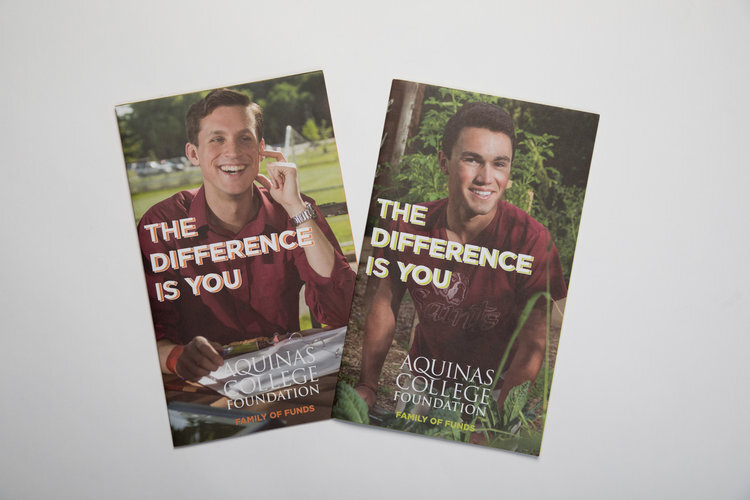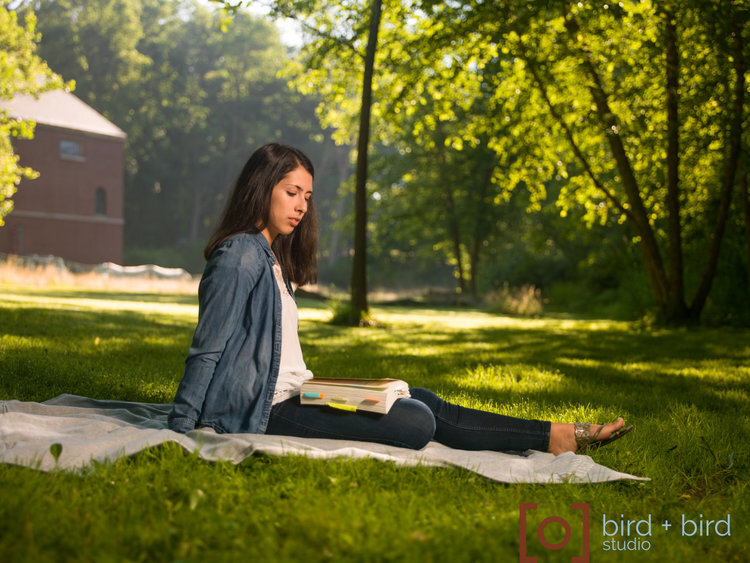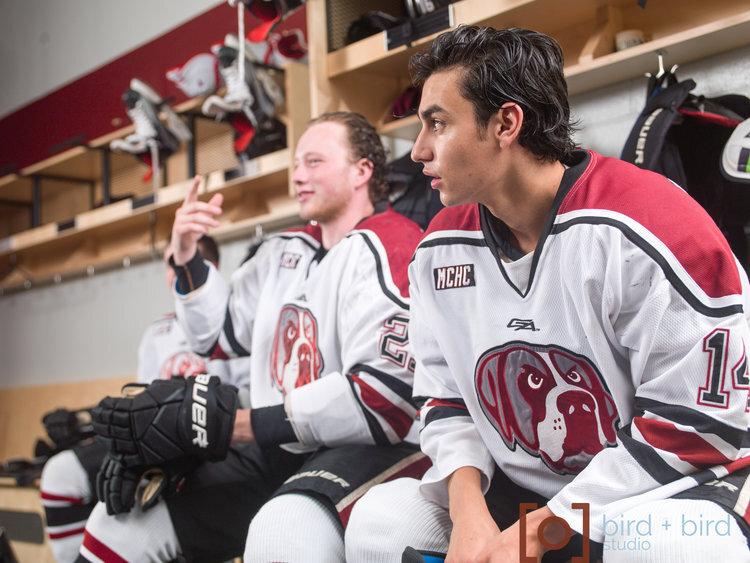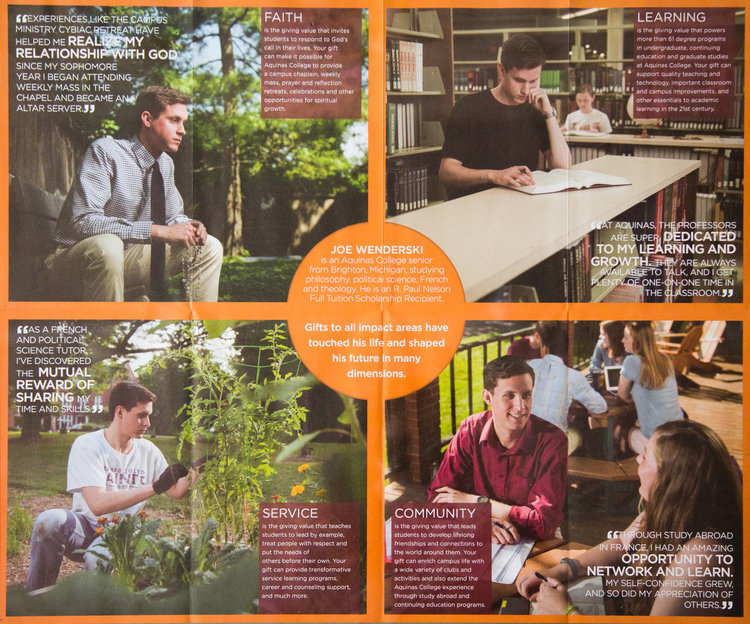Collaborating with a Marketing Team
Marketing campaigns usually involve a team of people working toward the common goal of crafting a body of work to perfectly display their message. Like the dreaded group projects in grade school, these collaborations often lead to headaches if your team doesn’t communicate and cooperate well. A great team makes the difference in securing a beautiful end piece.
Aquinas College is a much-loved client who has the collaboration thing figured out. Their creative director has a great understanding of photography and how to use it along with design to build a narrative. The creative director also participates on set, providing helpful feedback to me and managing “branding and messaging goals” so that I can focus closer on the photograph. This is a client I enjoy working with.
Recently, we worked on a direct mail fundraising campaign for the College Alumni Foundation. The design concept was a large, foldable tactile flier. It was one large page broken up into four panes with four folds, each displaying a different photo with a narrative of religion, environmentalism, service, and learning relative to a single subject. The goal was to show the kinds of values Aquinas instills in its students, values shared by the Aquinas community.
In the planning stages of this project, we decided it was important for the lifestyle photos to be as sincere as possible. We didn’t want to take any shortcuts. This meant shooting real students interacting in their normal environments on campus, using people who already had a relationship with the college and the space. I particularly wanted to make sure the shoot wasn’t rushed, that we took the time to work the location and find the best angles, to allow the models to relax and open up in their portraits. There is always time to do something badly, and rarely enough time to do something great.
Frequently when shooting scenes for marketing campaigns, there’s a lot of pressure to get the job done as quickly as possible. Every minute means more money spent. But taking the time is worth it if it allows a model to “find themselves” in front of the camera. An image is always best when the subject is fully present in it. In many ways this is the litmus test for authenticity, whether we look at a photograph and believe that the subject is present and engaged in the image. Whether it feels true, or real.
I wanted to slow down this shoot to allow time to build my relationship with the subjects. As a photographer, it’s immensely important to earn their trust. And for trust to be real, it must be earned. If you have to coerce a subject to adjust their body a certain way or take on a different tone or attitude, the shoot will become forced and the photos will lose emotional depth. Although they might still turn out well, they’ll only reflect the photographer’s representation of the subject. The subject’s own identity will be lost. However, once trust is earned, the subject will become more engaged, readily taking on suggestions and bringing their own unique self to the image.
It’s important for photography to work in close harmony with design. Collaborating with a Creative Director makes building these kinds of images easier, since they bridge with the design process. Our planning and careful timing for this shoot really paid off. It’s a meaningful final piece that represents the subjects, their beliefs, and Aquinas College itself in a very real way.





![[ o ] bird + bird studio](http://images.squarespace-cdn.com/content/v1/5fd126fd0ef3727f25d2af4c/1608057585746-JYMU8F2HPUVT6BF4XSZT/birdbirdLOGO.png?format=1500w)